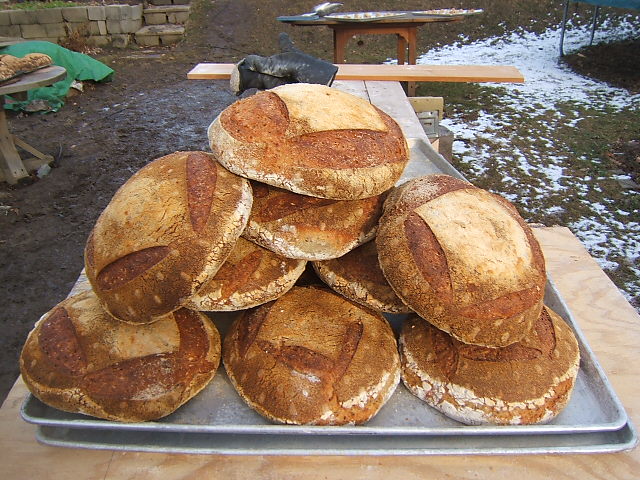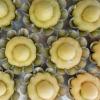
bagels


Blisters on bagels
I've been making bages using form Ciril Hitz's book formula. After I shaped the bagels I kept them in the refriggerator for about 15 - 20 hours depends on the day.
For some reason all the bagels have tiny blisters on the crust. I've done some research and people said that's because of extended fermentation, but I think the texture and density were about right and I don't believe they were kept in the fridge for too long.
Some said that this is common for hand rolled bagels, but if you have any ideas that I can make smooth crust bagels I'd love to know.
Thanks

My First Shot at Bagels
This is my first post on Fresh Loaf, but I have been reading posts for months now. This is my first try at Bagels and I consider it about 50% success. They look better than they taste. Not to say they taste bad, just not "bagelly".They actually taste a whole lot like my soft pretzels...sorta. They are 100% bread flour which I was not too happy to do, but I usually follow recipes very closely the first time around and then modify. I like whole wheat bagels the best so that is coming next.

Bagels taste bready??
So that is my first attempt at bagels. I'm posting a new topic because I didn't use the BBA formula. I followed the one in my Baking and Pastry - I think its a text book.
Anyway - I used malt extract powder from a homebrew shop.
57% hydration and 1% dried malt extract

Artisan Bread Every Day - Errata for Bagel Recipe
I have just bought Peter Reinhart's ABED and made the bagel recipe (which turned out fantastically well, by the way).
However there is an error in the recipe (pages 75 & 77, first edition). The correct volume of water for the poaching liquid is 1814-2721g, which is the equivalent of 64-96oz. The book says 181g-272g, being out by a factor of 10!
I couldn't find this errata notified after searching here and elsewhere, so trust it's not a duplication.

Poppy seeds contain opiates
Just a heads up on the opiate content of poppy seeds for those of us whose baked goods might be eaten by someone in the military and other services which do random urine tests.

Bagels in my Zojirushi
I have the Zojirushi BBCC x20
I would like to make bagel dough in it, but I'm worried that with such a stiff dough I might damage my machine.
I've seen several postings where people talk about making bagel dough in their machines but sadly no actual recipes or bagel-specific info.
Would anyone be willing to share their experiences with making bagels in their bread machines?
I have these recipe links that have bread machine instructions:

What's the deal with malt syrup?
Question. What does malt syrup add to bagels, except for sweetness? Is there something else? I have been making bagels for a little while now, and they turn out great. thanks!



